Planting for Acidic Soils
Understanding soil pH: a guide to optimal plant selection
One of the most important aspects of determining whether a plant is likely to succeed is the soil in which it is planted. Soil, like clay or compost, is a type of growing media, otherwise known as a substrate. Before selecting plants for a garden, it’s important to note that each plant has different requirements in terms of the soil in which it’s planted, and that not all soils are the same. These differences stem not only from their structure, such as clayey, sandy, or rocky compositions, but also their chemical properties, which are influenced by the water that flows through them. This chemical variance can significantly impact the health and growth of plants. Understanding these differences is the key to choosing the right plants and maximising plant productivity.
The pH level of soil plays a crucial role in determining the availability of essential nutrients for plant growth. Within the soil, plants absorb all the necessary elements for their survival, including naturally occurring organic matter and nutrients supplied by fertilisers. These nutrients are absorbed by plants through the liquid fraction of the soil, known as “soil solution”. The quantity of nutrients in the soil varies depending on the soil’s pH level and the quality of the soil solution.
Among various soil types, acidic soils stand out as a significant variable for plant growth. The primary cause acidic soil is frequent rainfall, which leaches away soluble alkaline substances, including calcium, magnesium, sodium, and potassium, depleting the soil. Another reason for high acidity can be from the weathering of acidic rocks such as granite. Additionally, the decomposition of fallen leaves from certain plants, such as conifers, azaleas, rhododendrons, and blueberries contributes to the acidity. Regardless of its origins, a substrate is deemed “acidic” when its soil solution contains a high concentration of hydrogen ions, measured by pH levels. A neutral soil typically registers around 7 on the pH scale, while acidic soils range between 7 and 3, with alkaline soils surpassing 7, sometimes reaching 10.
When we talk about acidic soils, we must make distinctions based on the specific pH value:
- pH between 5.1 and 5.5: highly acidic soil
- pH between 5.6 and 6: moderately acidic soil (sub-acid)
- pH between 6.1 and 6.5: slightly acidic soil
- pH between 6.6 and 7.3: neutral soil
In highly acidic soil, the overall microbial population decreases drastically. Slightly acidic soil tends to allow for bacterial growth without fungal presence. Extremely acidic soils contain elevated levels of aluminium, which negatively impacts plant metabolism, along with toxic heavy metals like zinc and cadmium, harmful to all living organisms. Sub-acidic soils, which are prevalent, offer hospitable conditions; they are soft, easily manageable, rich in humus, and boast plenty of nutrient availability.

How to measure pH of soil
To determine the soil acidity, there are two tools we can use: litmus test and pH meter.
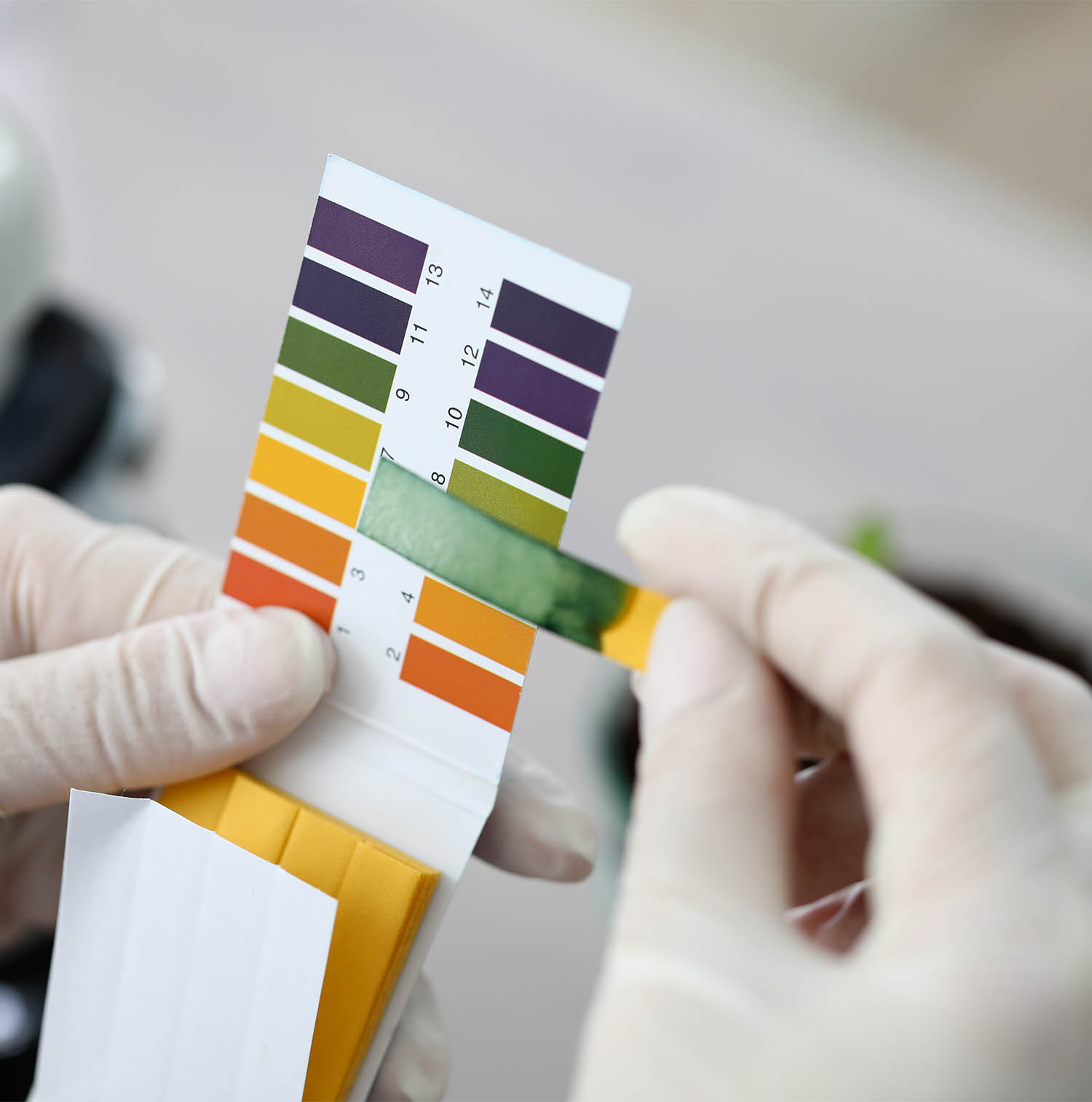
Litmus test
To check the pH level of the soil using the litmus test, it’s required to collect multiple soil samples from various areas across the garden, approximately 20 cm deep. It is recommended to collect the samples from areas without any plants, which could affect the accuracy of the measurements.
The collected samples should be mixed to create a combined one, which will then be sifted and placed in a glass container. This soil sample needs to be mixed with distilled water in the following ratio: 250 ml of distilled water for every 100 grams of soil.
Water and soil needs to be well mixed, before the container is sealed. The mix needs to settle for approximately thirty minutes. Afterwards, litmus paper is dipped into the solution. By comparing the colour the paper becomes, with the reference table provided in the package, you are then able to accurately determine the pH value of the soil under examination. The more acidic a substance is, the more red the paper will go, similarly, if a substance is extremely alkaline, it’ll turn a much brighter shade of blue.
pH meter
A pH meter is an instrument that features a probe for directly measuring the soil’s pH without the need for sampling.
It is only necessary to make a small hole at least 10 cm deep on the soil to be analysed. You then fill the hole with distilled water, before inserting the pH meter probe into the hole, and waiting about a minute to obtain the reading.
As with the litmus test, in order to achieve an accurate result, it is better to carry out measurements in several areas of the garden.
Once the soil’s acidity level is determined, it’s time to select suitable plants for the garden. In more neutral soils, or sub-acidic soils, the options are limitless, requiring minimal intervention. Nearly all plants will thrive in sub-acidic soils, with the exception of those preferring alkaline conditions. Acidophilic plants are plants that thrive specifically in acidic soils. These would suit well sub-acidic soil, while those favouring neutral soils may grow slightly less vigorously. Otherwise, in acidic and highly acidic soils, would be better to prioritise acidophilic plants.
Most ornamental plants thrive in soil with a slightly acidic pH, typically between 6 and 7, which provides optimal availability of nutrients.
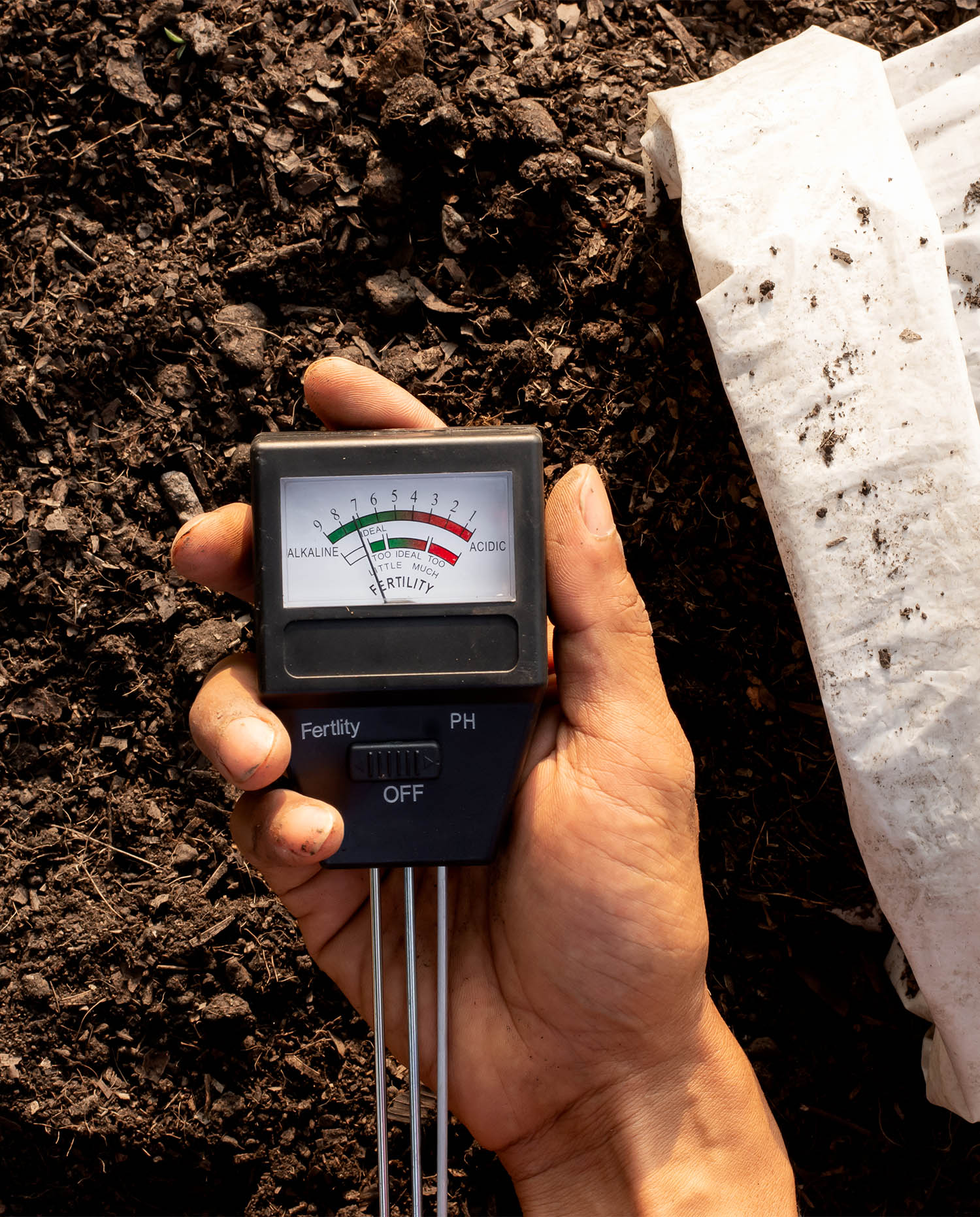
Acidophilic plants: what are they?
There are a large variety of acidophilic plants, including numerous different species. For those plants, it’s essential to maintain the soil to be slightly moist, as well as acidic, particularly during warmer temperatures, for optimal growth and development. To prevent soil stagnation, it’s important to water them sparingly but frequently. Fertilisation should occur in winter to supply necessary nutrients until summer, with a possible repeat in April after pruning. Most importantly, it’s essential to always ensure acidophilic plants are in soil with a pH below 6 for their well-being.
Did you know?
The soil beneath turf is usually more alkaline, whereas soils beneath trees tend to be more acidic. This is due to there being more decaying material, such as leaves, that drop onto the ground near trees. For this reason, plants native to woodland habitats tend to be those most suitable for growing in acidic soils.

Hedera hiberica
Below are some of our favourite acidophilic plants featured in our G Range, that we recommend for planting in projects with acidic soils.
Hedera hiberica
Hedera hiberica is a vigorous, evergreen climbing ivy with lush, lobed, triangular, dark green foliage. In autumn it blooms with small green flowers in umbels that are great for pollinators. Black berries follow in winter and these are an excellent food source for birds. Hedera hibernica is Ideal for covering fences or walls and is also great for groundcover. Hedera hibernica prefers fertile, well-drained soil rich in organic substance. It’s exceptionally hardy, and can also grow in poor quality,stony soil, as long as it is well-drained and not subject to water stagnation.
Bergenia ‘Silberlicht’
Bergenia ‘Silberlicht’ is a clump-forming perennial with oval-shaped, leathery leaves. It has tall, red stems bearing white flowers which transition to pink.
It typically doesn’t exceed 50 cm in height, but on average, it takes 2-5 years for the plant to reach its full growth potential. From April to May, it produces white bell-shaped flowers clustered in an umbel. Highly resilient to cold and frost, it thrives in semi-shaded locations. Optimal growth occurs in acidic, moist, and cool soil. Bergenia ‘Silberlicht’ is an excellent choice for groundcover.
Cistus ‘Silver Pink’
Cistus ‘Silver Pink’ is a compact, low maintenance shrub with lance-shaped foliage and masses of delicate, silver-pink, summer flowers. This plant requires acidic or silicon-rich soil. It generally prefers milder temperatures and can struggle in the winter cold. It is often chosen for its flowers, which bloom often, but are short-lived, lasting as little as a single day. Cistus ‘Silver Pink’ is great for a mediterranean planting theme.
Cotoneaster × suecicus ‘Coral Beauty’
Cotoneaster × suecicus ‘Coral Beauty’ is a low growing shrub with dark green foliage, that’s effective at smothering weeds. Blooms small, white flowers in summer, and orange berries in autumn, giving colour to the garden for a most of the year. ‘Coral Beauty’ is one of the easiest Cotoneaster varieties to maintain, grows healthily in acid soils, and preferring well-drained and slightly rocky soil.
Ilex crenata
Ilex crenata is a slow growing evergreen species with a compact, dense habit. Ideal for topiary as its small, green, glossy leaves offer a similar look to Buxus sempervirens.
This compact, upright shrub originates from Japan and can attain a height of 5 meters. As a dioecious plant, it produces both male and female varieties. Its small, white flowers blossom in May-June, while fruits, exclusive to female plants, emerge in September-October as small, shiny black berries. Male plants serve as pollinators and do not produce any fruit.
Mahonia × media ‘Charity’
Mahonia × media ‘Charity’ is an upright evergreen with spikes of pale yellow flowers above rosettes of spiky, dark green leaves. Provides fragrance through the winter months and valuable nectar for pollinating insects, as well as berries for birds. Mahonia × media ‘Charity’ is perfect for adding year-round, architectural interest in shady spots. The best results with Mahonia × media ‘Charity’ are achieved in moist but well-drained soil, in a partial shade position.
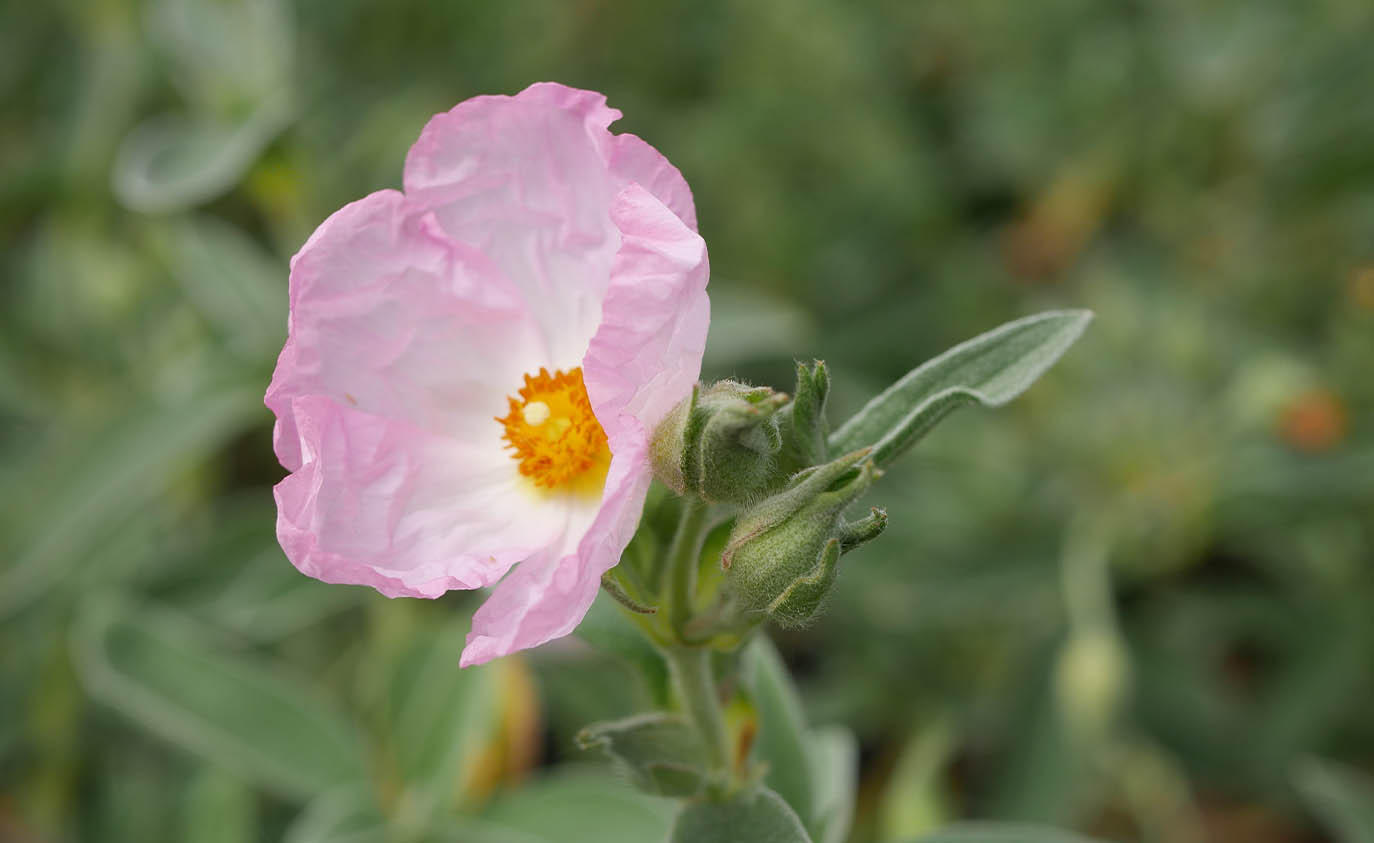
Cistus ‘Silver Pink’
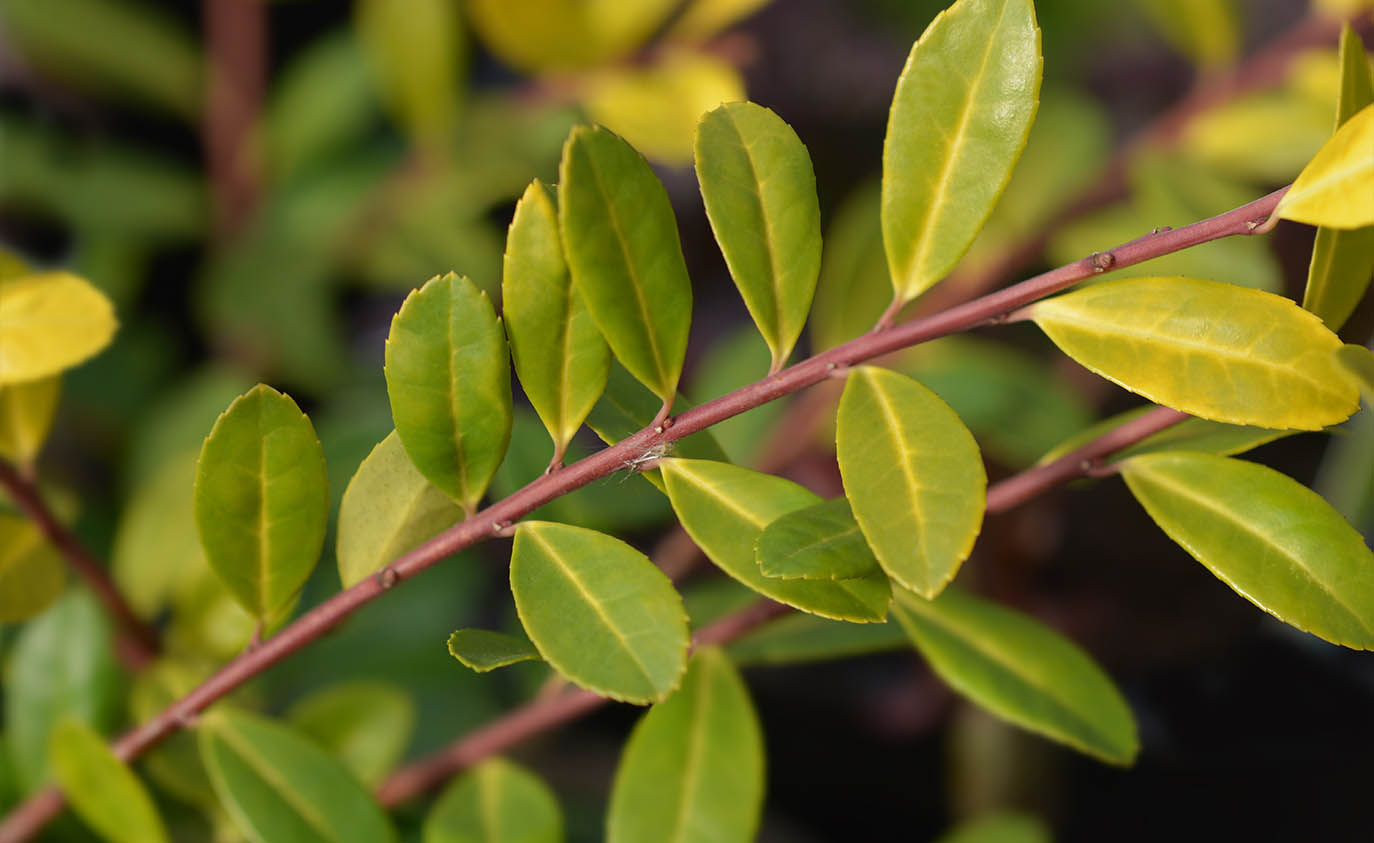
Ilex crenata
Pieris ‘Forest Flame’
Pieris ‘Forest Flame’ is an upright evergreen shrub with a narrow habit. Produces bright red young foliage in spring, which later turn pink, cream, and eventually mature to green. In spring it blooms clusters of bell-shaped, creamy white flowers. Great for adding structure and colour to the back of a border. Water stagnation must also be avoided for Pieris ‘Forest Flame’. It needs to be watered regularly, but the soil must be allowed to dry between waterings.
Pyracantha ‘Orange Glow’
Pyracantha ‘Orange Glow’ is a large, spiny evergreen shrub with an upright habit and glossy dark green leaves. It bears clusters of small, white flowers in early summer that attract pollinating insects, followed by bright orange berries that last throughout autumn and into winter. Pyracantha is good along boundaries where its dense structure and sharp spines will deter intruders. It is excellent for hedges, both shaped and free, or used in groups, it is also perfect if planted in pots or for sloping land.
Amelanchier lamarckii
Amelanchier lamarckii is a small, open tree with young, copper-bronze foliage which turns fiery red in the autumn months. It also produces clusters of white, star-shaped blooms and red-purple berries, which are a great food source for birds. Amelanchier lamarckii is a visually interesting tree during the winter once its leaves have fallen, with its spreading, vase-shaped crown. It can grow in many different types of soil as well as acidic soil.
Sorbus aucuparia
Sorbus aucuparia is an upright deciduous tree with distinctive pinnate leaves which transition to yellow in autumn. In spring it blooms clusters of five-petalled white flowers which are pollinated by insects and then followed by orange-red berries in autumn. These berries attract many different species of birds. It loves acidic soil, with a good quantity of peat-free compost, well drained and rich in humus. Drainage is very important,as any stagnation of water can cause root rot which will cause the plant to die.
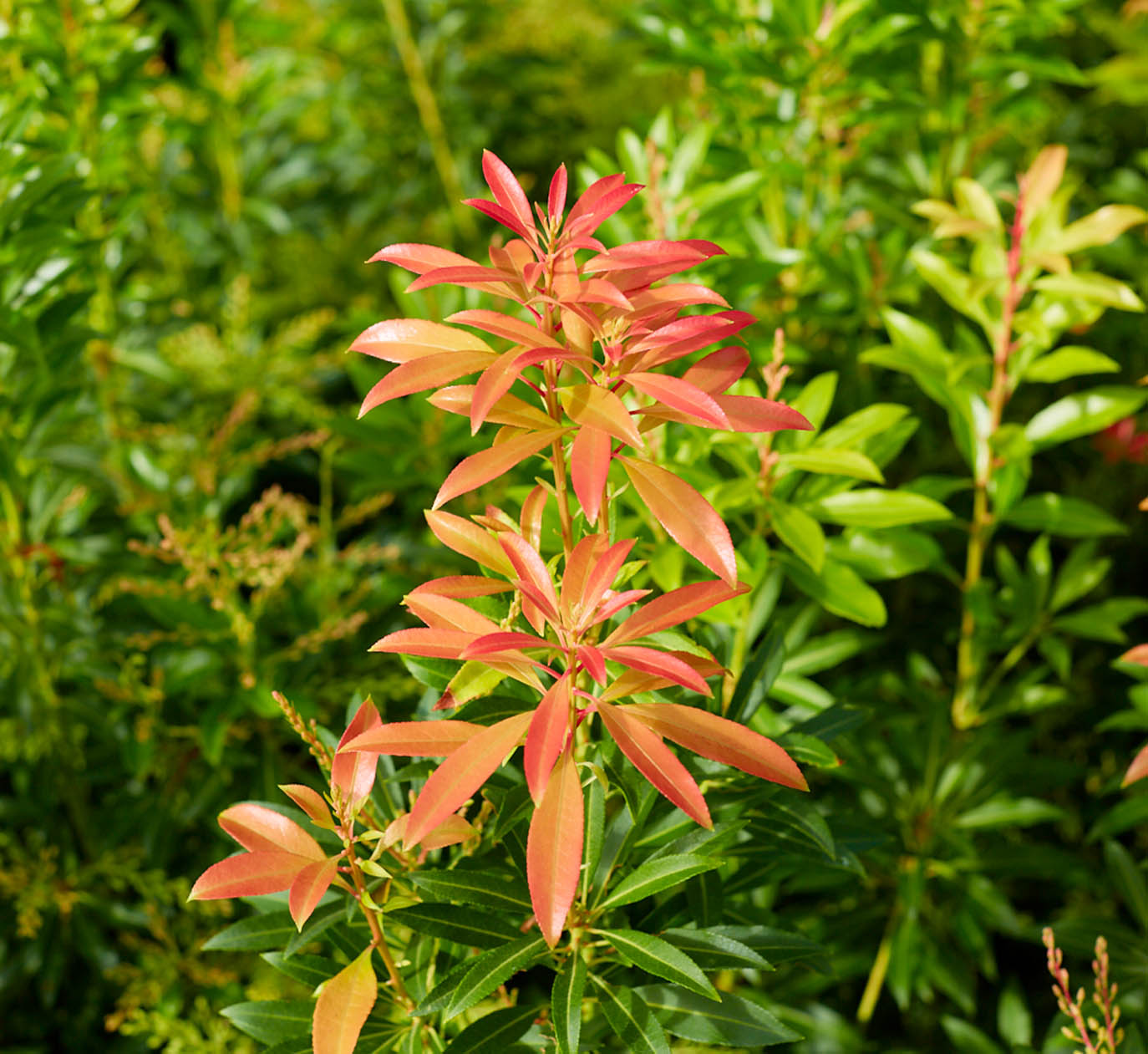
Pieris ‘Forest Flame’

Pyracantha ‘Orange Glow’
While we suggest to keep the existing soil with its natural pH rather than attempting to alter it, there are a few ways to help neutrophilic or alkalophilic plants to grow in acidic or highly acidic soil. You can adjust the pH balance naturally by applying lime or limestone. These materials are organic and environmentally friendly. Determining the correct dosage for your soil can be challenging due to limited guidelines on the matter. As a starting point, would be necessary to distribute 3 hectograms of lime per square meter in autumn, burying it with a spade. In spring, after a new check of the soil pH, if the value of pH is still too high, it can be enrich with another dose of lime before planting. It could be necessary to repeat this process every two to three years, or as needed, to maintain optimal soil conditions.
Using peat-free compost to mix into your soil and enrich it is a good way of keeping a more balanced pH level in your substrate. Peated compost has a naturally low pH level, making for a more acidic growing medium. Not only do peat-free alternatives help balance the acidity of the soil, but it also is a more sustainable, and reduces the carbon footprint of your landscaping project.
If you’re interested in hearing more about the plants we recommend, or have any other inquiries about acidic soils, contact the G Team today.

